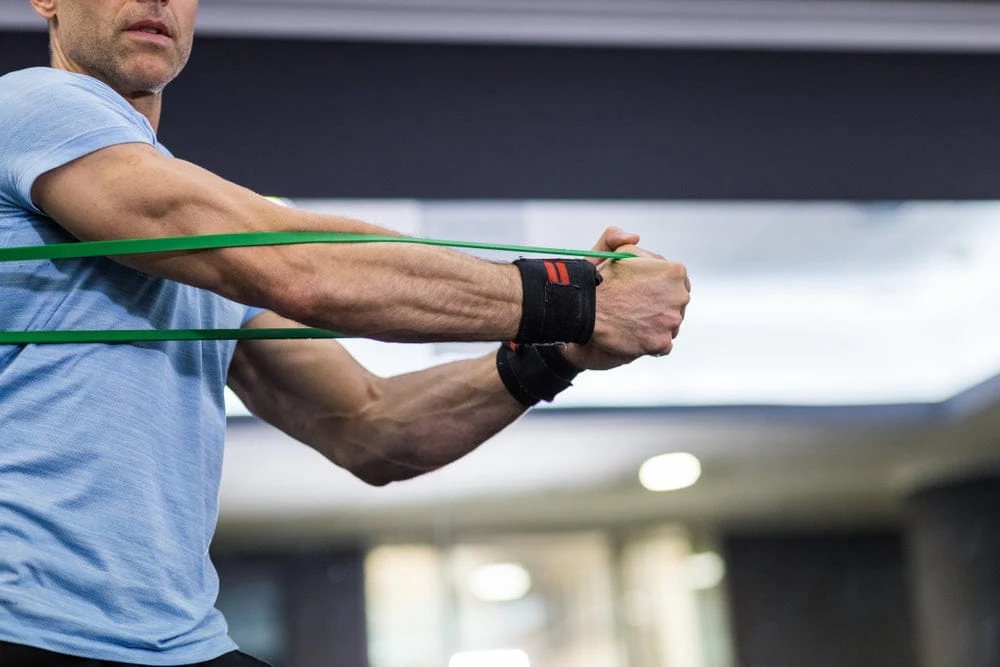How to Do the Pallof Press: Core Strength, Stability, and Anti-Rotation Power
If you train your abs with only crunches and leg raises, you’re missing one of the most important functions of your core: resisting movement.
That’s where the Pallof Press shines. It’s one of the most underrated core exercises in bodybuilding and strength training — a true game-changer for lifters who want to build real core control, not just visual abs.
This guide covers:
- What the Pallof Press is
- What muscles it trains
- Why it belongs in your program
- Step-by-step form breakdown
- Mistakes to avoid
- Progressions, variations, and programming strategies
What Is the Pallof Press?
The Pallof Press is an anti-rotation core exercise. That means instead of flexing or twisting your spine, your job is to resist being pulled or rotated by an external force — usually a cable or resistance band.
Named after physical therapist John Pallof, this move trains your body to maintain a rigid, braced core while your arms move — just like you do in squats, presses, carries, and real-world movement.
Muscles Worked
Primary:
- Obliques (resist rotation)
- Transverse Abdominis (deep stabilizer)
- Rectus Abdominis (supports anti-extension)
Secondary:
- Glutes (pelvic control)
- Shoulders & scapular stabilizers
- Lower back (erector spinae)
This isn’t just an ab exercise — it’s a total core activation drill that carries over to every compound lift you do.
How to Do the Pallof Press (Step by Step)
Set-Up:
- Attach a resistance band or cable handle to chest height.
- Stand sideways to the anchor point, feet shoulder-width apart.
- Hold the handle with both hands, at your chest.
- Step out until there’s moderate tension on the cable or band.
Execution:
- Brace your core — imagine tightening your abs like taking a punch.
- Press the handle straight out from your chest.
- Hold for 2–3 seconds. Don’t let your torso rotate.
- Slowly bring it back in.
- Repeat for 8–15 reps, then switch sides.
Pro Tips:
- Knees slightly bent
- Squeeze glutes to stabilize pelvis
- Keep chest tall and shoulders down
- Don’t twist or lean — stay locked in
Common Mistakes
❌ Twisting the Torso
Fix: Focus on resisting rotation, not pushing max weight. Reduce the load and tighten your brace.
❌ Letting Shoulders Drift Forward
Fix: Retract and depress the scapula (shoulders back and down) before each rep.
❌ Using Too Much Weight Too Soon
Fix: Start with a light band or 10–20 lbs on the cable. Master form first.
❌ Standing Too Close to the Anchor Point
Fix: Step out until you feel lateral tension trying to twist you — that’s the stimulus you want to fight.
Pallof Press Variations
Half-Kneeling Pallof Press
- Reduces lower body compensation
- Increases pelvic control
Tall Kneeling Pallof Press
- Great for glute activation and torso alignment
- Good for beginners
Overhead Pallof Press
- Press overhead instead of straight out
- Advanced variation that trains anti-extension
Pallof Press with Rotation
- Add controlled rotation after pressing to train full-range oblique function
Isometric Hold (Pallof Iso)
- Press out and hold for 20–30 seconds
- Great for core endurance
Programming the Pallof Press
➕ For Core Stability (Strength Base):
- 2–3 sets of 8–10 reps per side
- 2–3 sec pause at extension
➕ For Hypertrophy/Core Finishers:
- 3 sets of 12–15 reps
- Add a tempo (3-1-1) for time under tension
➕ For Athletic/Core Activation:
- 2–3 sets of 20–30 sec holds
- Use before big lifts to prime the brace
Where to Use the Pallof Press in Your Split
🔹 After Upper Body Days
- Core finisher after pressing or pulling
🔹 On Lower Body Days
- Reinforces anti-rotation control before or after squats/deads
🔹 In Warm-Ups (Light Band)
- Activates obliques and deep core muscles pre-lift
Why Every Lifter Needs Pallof Presses
- Builds rotational control for deadlifts, rows, overhead press
- Helps protect the spine under axial load
- Improves core control without spinal stress
- Works even when fatigued — great as a finisher or warm-up
- Scales easily for all lifter levels
This is one of the few movements that actually makes your core work the way it’s meant to — and it requires minimal equipment.
Final Word: Stop Crunching. Start Resisting.
The Pallof Press isn’t flashy. It won’t give you a pump. But it will make your core stronger, more stable, and more useful.
If you’re a lifter who wants more than just aesthetics — if you want real-world strength and bulletproof performance — the Pallof Press belongs in your program.
Train it like you mean it. Track it. Progress it. And start building a core that doesn’t just look good — it holds the line under pressure.
🔗 Related Articles:
- The Complete Guide to Core Training for Muscle, Strength, and Stability
- Top Core Training Mistakes (And How to Fix Them)
- Core Workouts for Bulking vs Cutting
- Abs vs Core: Why Your Crunches Aren’t Enough
- The 5 Best Weighted Core Exercises





